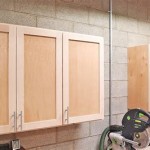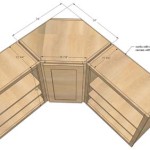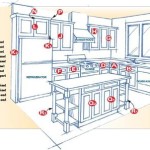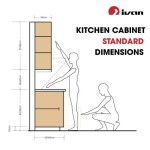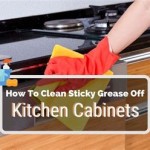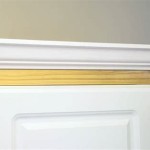The Best Shelf Liners for Kitchen Cabinets: Protecting and Organizing Your Space
Maintaining clean and organized kitchen cabinets is a challenge for many homeowners. Spills, drips, and the general wear and tear of storing dishes, cookware, and pantry items can quickly lead to unsightly stains and potential damage to cabinet surfaces. Shelf liners serve as a crucial barrier, protecting cabinets from these issues while also contributing to a more organized and visually appealing kitchen.
Choosing the right shelf liner depends on several factors, including budget, desired level of protection, ease of installation, and aesthetic preferences. The market offers a diverse range of options, each with its own unique characteristics and benefits. This article explores the different types of shelf liners available, highlighting their strengths and weaknesses to help homeowners make informed decisions about which liner best suits their needs.
Understanding Different Types of Shelf Liners
The most common types of shelf liners can be broadly categorized into adhesive, non-adhesive, and specialty liners. Each type offers a different level of protection, durability, and ease of use. Understanding the distinctions between these types is crucial for selecting the most appropriate option for specific kitchen cabinet needs.
Adhesive Shelf Liners: These liners feature a sticky backing that allows them to be securely attached to the cabinet surface. This ensures that the liner stays in place, preventing slippage and providing a more stable surface for storing items. Adhesive liners are typically made of vinyl or plastic, offering resistance to water and stains. The strong adhesion makes them a good choice for high-traffic cabinets or those where spills are frequent.
However, the adhesive backing can also be a disadvantage. Removing adhesive liners can be a challenging task, often leaving behind a sticky residue that requires specialized cleaning products to remove. Furthermore, improper installation can lead to air bubbles or wrinkles, detracting from the overall appearance.
Non-Adhesive Shelf Liners: These liners rely on their weight and a textured surface to stay in place. They offer a more flexible and easily removable option compared to adhesive liners. Non-adhesive liners come in various materials, including vinyl, plastic, and even woven fabrics. The textured surface helps to grip the cabinet surface and prevent items from sliding around. This type of liner is often preferred for its ease of installation and removal.
While non-adhesive liners are easier to reposition and replace, they may not offer the same level of stability as adhesive liners. In high-traffic areas or when storing heavy items, these liners may shift or bunch up, requiring occasional readjustment. They are generally better suited for lighter use and for cabinets where easy access and cleaning are priorities.
Specialty Shelf Liners: This category encompasses liners designed for specific purposes, such as preventing moisture damage, absorbing odors, or providing extra cushioning. Examples include cork liners, which offer excellent moisture absorption and cushioning; activated charcoal liners, which help to neutralize odors; and padded liners, which provide extra protection for delicate items like glassware. These specialty liners often come with a higher price tag but can be a worthwhile investment for addressing specific concerns or protecting valuable items.
The choice between these different types of shelf liners ultimately depends on individual needs and priorities. Careful consideration of the advantages and disadvantages of each type will ensure that the chosen liner effectively protects and enhances the functionality of kitchen cabinets.
Key Features to Consider When Choosing Shelf Liners
Beyond the basic types, several key features should be considered when selecting shelf liners. These features directly impact the performance, durability, and overall satisfaction with the chosen product. Paying attention to these details will help ensure that the shelf liner meets specific needs and provides long-lasting protection.
Material: The material of the shelf liner significantly affects its performance in terms of durability, water resistance, and ease of cleaning. Vinyl and plastic liners are popular choices due to their affordability and water-resistant properties. They are easy to wipe clean and can withstand spills and drips without staining. However, they may not be as environmentally friendly as other options. Cork liners offer excellent moisture absorption and are a sustainable choice, but they may require more frequent cleaning. Fabric liners can add a decorative touch but may be more prone to staining and less resistant to moisture.
The material should also be considered in relation to the type of items being stored in the cabinets. For example, if storing heavy cookware or dishes, a thicker and more durable material like heavy-duty vinyl or plastic is recommended. For delicate glassware, a padded liner made of foam or cork may be a better choice.
Thickness: The thickness of the shelf liner determines its level of protection and cushioning. Thicker liners offer better protection against scratches, dents, and spills. They also provide more cushioning for delicate items, reducing the risk of breakage. However, thicker liners may be more difficult to cut and install, especially in cabinets with tight corners or unusual shapes. Thinner liners are easier to work with but may not offer the same level of protection.
The ideal thickness depends on the specific application. For general-purpose use, a medium-thickness liner is usually sufficient. For cabinets that store heavy or fragile items, a thicker liner is recommended. Consider the trade-off between protection and ease of installation when selecting the appropriate thickness.
Grip: The grip of the shelf liner is essential for preventing items from sliding around and keeping the liner in place. Non-adhesive liners rely on a textured surface to provide grip, while adhesive liners use a sticky backing. The effectiveness of the grip depends on the material of the liner and the type of surface it is applied to. Some liners feature a non-slip coating or a raised texture to enhance grip.
When choosing a non-adhesive liner, look for one with a pronounced texture or a non-slip coating. For adhesive liners, ensure that the adhesive is strong enough to hold the liner in place without being so aggressive that it damages the cabinet surface upon removal. Proper installation is crucial for maximizing the grip of either type of liner.
Ease of Cleaning: Kitchen cabinets are prone to spills and messes, so choosing a shelf liner that is easy to clean is essential. Vinyl and plastic liners are typically the easiest to clean, as they can be wiped down with a damp cloth or sponge. Cork and fabric liners may require more specialized cleaning methods. Look for liners that are stain-resistant and can be easily cleaned without leaving behind residue.
Consider opting for liners that are dishwasher-safe for even easier cleaning. Regularly cleaning the shelf liners will help maintain a hygienic kitchen and prolong the life of the liners.
Installation and Maintenance Tips for Shelf Liners
Proper installation and regular maintenance are crucial for maximizing the lifespan and effectiveness of shelf liners. Following these tips will ensure that the liners provide long-lasting protection and contribute to a more organized and visually appealing kitchen.
Preparation: Before installing shelf liners, thoroughly clean the cabinet surfaces. Remove any existing debris, spills, or residue. For stubborn stains, use a mild cleaning solution and a scrub brush. Allow the cabinets to dry completely before proceeding with the installation. This will ensure that the liners adhere properly and prevent the growth of mold or mildew.
For adhesive liners, it is especially important to ensure that the surface is clean and smooth. Any imperfections or debris can interfere with the adhesion and cause the liner to peel or bubble. Consider using a primer or adhesive promoter to improve adhesion on difficult surfaces.
Measurement and Cutting: Accurately measure the dimensions of the cabinet shelves before cutting the liners. Use a measuring tape and a straight edge to ensure precise measurements. Transfer the measurements to the liner and use a sharp utility knife or scissors to cut the liner to size. For cabinets with irregular shapes or corners, create a template using cardboard or paper and then transfer the template to the liner. Allow for a slight overlap to ensure complete coverage and prevent gaps.
When cutting adhesive liners, it is helpful to peel back a small portion of the backing and align the liner with the cabinet surface. Gradually peel back more of the backing as you smooth the liner into place. This will help prevent air bubbles and wrinkles.
Installation: For adhesive liners, carefully peel back the backing and align the liner with the cabinet surface. Use a smoothing tool, such as a credit card or a squeegee, to press the liner firmly into place. Start from the center and work your way outwards to eliminate air bubbles. For non-adhesive liners, simply place the liner on the cabinet shelf and adjust as needed. Ensure that the liner is properly aligned and that there are no gaps or overlaps.
For specialty liners, follow the manufacturer's instructions for installation. Some liners may require specific adhesives or installation techniques. Pay close attention to these instructions to ensure proper installation and optimal performance.
Maintenance: Regularly clean the shelf liners to prevent the buildup of dirt, spills, and debris. Wipe down the liners with a damp cloth or sponge as needed. For stubborn stains, use a mild cleaning solution. For dishwasher-safe liners, remove them from the cabinets and wash them in the dishwasher. Allow the liners to dry completely before replacing them in the cabinets.
Inspect the liners periodically for signs of wear and tear. Replace any liners that are damaged or worn out. This will help maintain a clean and organized kitchen and prevent damage to the cabinet surfaces.
By following these installation and maintenance tips, homeowners can ensure that their shelf liners provide long-lasting protection and contribute to a more functional and aesthetically pleasing kitchen space. The initial investment in quality shelf liners, coupled with proper care, will ultimately save time and money in the long run by preventing damage to cabinets and simplifying the cleaning process.

How To Choose The Best Kitchen Shelf Liner 7 Tips Everyday Old House

The Best Shelf Liners Of 2024 Top Picks By Bob Vila

The Best Shelf Liners For Protecting Your Cabinets And Drawers

8 Pros And Cons Of Kitchen Cabinet Shelf Liners Everyday Old House

The Best Non Adhesive Shelf Liners For Lining Drawers And Shelves

Simple Diy Drawer And Shelf Liners
:strip_icc()/81Un132ppZL._AC_SX679_-ef9d20e4cd22455e8db3596c0cbd51bf.jpg?strip=all)
The 12 Best Shelf Liners Of 2024
The Best Shelf And Drawer Liners Of 2024

Simple Diy Drawer And Shelf Liners
The Best Shelf And Drawer Liners Of 2024
Related Posts

